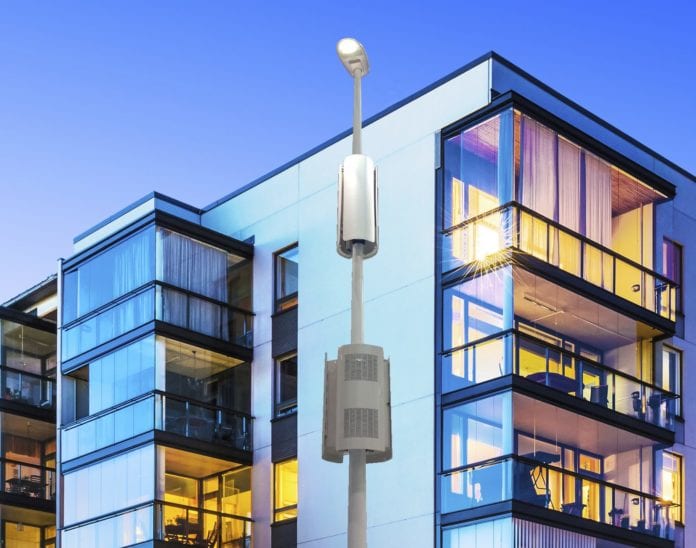Most of us are using our mobile devices more than we did a year or two ago, and certainly more than we did 5-10 years ago. As we look around we see others doing exactly the same thing. The places we see this the most are often public spaces, tourist attractions, and event venues – often the last places we want to encounter cables and antennas.
“It might be next to a historic district, it might be next to housing, and people don’t want to look at equipment,” explained Steve Kemp, manager of Small Cell Site Solutions at CommScope. Kemp is the author of CommScope’s recent white paper, Improving Metro Cell Performance with Electrical Downtilt and Upper Sidelobe Suppression.
Upscale neighborhoods, public venues, and downtown centers are often the perfect places for carriers to deploy small cells, from a technical perspective. Instead of adding equipment to the nearest cell tower, a carrier can pinpoint a network trouble spot and solve the problem with a small cell.
The same idea applies on a larger scale across a metropolitan area. Verizon Wireless is deploying a network of 400 small cells in downtown San Francisco that targets the most crowded areas. Putting wireless equipment of any size in suburban or urban areas has its set of challenges, however. The ability to get permitted is high on that list. Aesthetics and equipment concealment play an important role in getting such sites permitted.
“As you get into these places that are very difficult to blend in, like Market Street in San Francisco, you are trying to be as unobtrusive as possible,” said Kemp. Sometimes visibility of a small cell can be inversely related to cost. Kemp said that in some instances operators have built fake lamp posts to support small cells, or replaced wooden utility poles with new poles that can support additional equipment.
But CommScope is learning that concealment does not always have to be costly. Using smaller cabinets that house only the equipment that cannot be outdoors is one way to conceal small cells cost effectively. Radio equipment can be outside the cabinet, often shrouded in a metal case.
Some deployment scenarios call for concealment solutions that do not even show cabinets or casing. Kemp said he has seen a number of deployments in outdoor areas, where cells are designed to blend in with trees and other vegetation.
But the majority of metro cell deployments are likely to be closer to buildings than to trees, in urban areas that need capacity the most, yet often have the least space to accommodate it and the lowest tolerance for obtrusive equipment. Verizon Wireless said that San Franciscans have had numerous questions about the aesthetic impact of its small cell deployment, and that they prefer the (more expensive) deployments on steel poles because the design is cleaner than it is on wooden poles.
Carriers are used to dealing with community concerns, and have at times relocated proposed macro sites to accommodate a community. But with small cells, changing a proposed location is likely to impact the service that the carrier can ultimately deliver. Metro cells are meant to solve capacity issues at specific locations.
“Because they are very small radius devices, generally anywhere between 5 and 10 watts, you have to hit the latitude and longitude of where these things go pretty precisely,” said Kemp. “It’s not like you can be off by a half a mile and everything is going to be OK.”
Instead, operators need to focus on deployments that blend in with their surroundings, in order to give communities the connectivity they need in the environment they want.
For more on this topic, download CommScope’s white paper.

